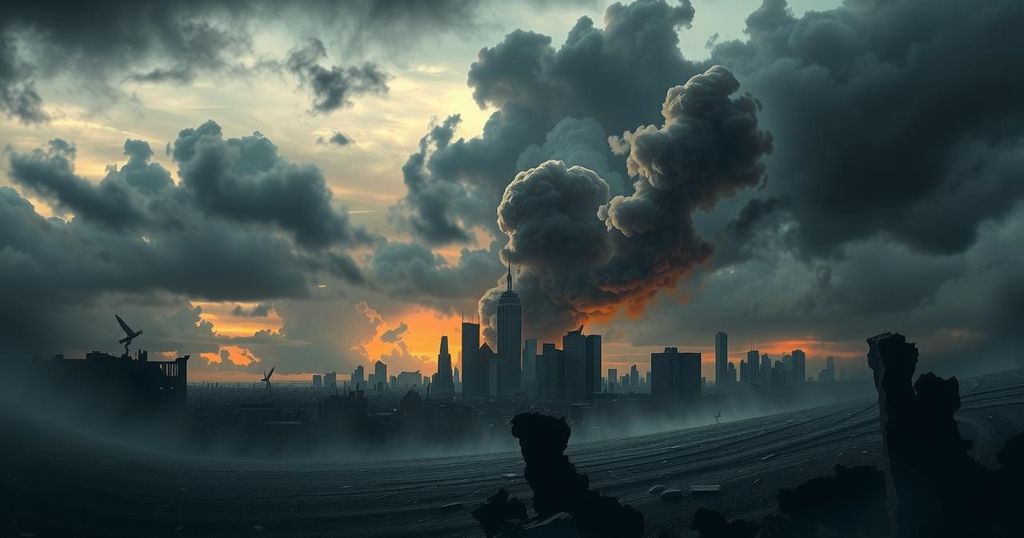The United Nations has reported that nearly 3,000 people have died due to ongoing violence in Goma, DR Congo, following its capture by rebel forces. The UN has expressed concerns over the humanitarian crisis, as fighting persists despite a rebel ceasefire announcement. The conflict, driven by ethnic tensions and resource struggles, continues to threaten the safety of civilians.
The United Nations reports that nearly 3,000 individuals have lost their lives in Goma, a city in the eastern Democratic Republic of Congo, following its takeover by rebel forces. According to Vivian van de Perre, the deputy chief of the UN mission in the region, approximately 2,000 bodies have been recovered from the streets, with a further 900 remaining in morgues. She cautioned that this toll is expected to rise as more bodies are discovered in various areas.
The takeover occurred amidst severe clashes between the Congolese army and the Alliance Fleuve Congo (AFC), a coalition of rebel groups including the M23 faction. Following the clashes, the AFC announced a ceasefire, which the Congolese government dismissed as insincere. Despite the announcement, ongoing fighting has been reported, particularly in South Kivu province, raising alarm levels in the UN regarding the violation of the ceasefire.
The Democratic Republic of Congo, with a population exceeding 100 million, has long grappled with violence fueled by ethnic conflicts and struggles for land and mineral resources. M23, composed mainly of ethnic Tutsis, has been at the forefront of renewed hostilities, claiming to defend minority interests and asserting that it will pursue further territorial gains, including ambitions toward Kinshasa, the national capital.
As tensions escalate, the UN has expressed significant concern over the humanitarian implications, with reports of increased displacement and suffering among civilians. The organization is particularly worried about losing control of critical infrastructure, such as Bukavu’s Kavumu airport, vital for humanitarian efforts. Despite the rebels’ claims of protecting civilians, the situation remains unstable, with all escape routes from Goma currently under their control.
In Goma, the Unity of the Congolese government has not acknowledged the rebel group’s occupation but has admitted their presence. Following the violence, the appointment of a new military governor was made to assume control of North Kivu, affirmed to be under a state of siege. The UN estimates that nearly 2,000 civilians are taking refuge in its peacekeeping facilities within Goma due to the ongoing conflict.
The violence in the eastern Democratic Republic of Congo, particularly in cities like Goma, is deeply rooted in a history of ethnic conflict and competition for resources, including valuable minerals. The region has witnessed persistent instability fueled by rebel factions, government military responses, and international intervention pressures. Recent conflicts have intensified, drawing attention from the United Nations and prompting humanitarian concerns regarding the safety and wellbeing of civilians caught in the crossfire. Failures in governance and external influences, especially accusations against neighboring Rwanda for supporting certain rebel groups, further complicate the situation, which impacts efforts toward stabilization and peace in the region. The presence of numerous armed groups reflects the complexities involved in addressing the enduring crises faced by civilians and the challenges in delivering humanitarian aid amidst continued hostilities.
In summary, the ongoing conflict in Goma, DR Congo, has resulted in a humanitarian disaster, with nearly 3,000 fatalities reported and thousands more displaced. The UN’s concerns regarding the humanitarian crisis have heightened due to persistent fighting despite claims of a ceasefire by the rebels. The international community is urged to pay attention to the situation as rivalries over resources continue to threaten peace and stability in this volatile region.
Original Source: keyt.com




